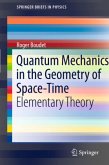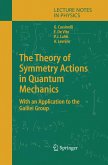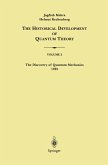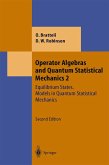Based on the interactive program Interquanta, Quantum Mechanics on the Macintosh, uses extensive 3-D graphics to guide the student through computer experiments in the quantum mechanics of free particle motion, bound states and scattering, tunneling, two-particle interactions, and more. It also includes a section on special functions of mathematical physics. With more than 200 problems, the text and programs provide students with practical experiences in using such hard-to-visualize concepts as complex amplitudes, eigenvalues, and scattering cross sections. The diskette included with the book provides two versions of the programs, one for use in computers with a mathematical coprocessor, the other optimized for machines without a coprocessor. For this new edition the software has been updated and extended.
Quantum Mechanics on the Macintosh uses extensive 3-D graphics and more than 200 problems to guide the student through computer experiments in the quantum mechanics of free particle motion, bound states and scattering, tunneling, two-particle interactions, and more. The diskette included with the book provides programs in versions optimized for computers with or without mathematical coprocessors.
l Ever since we published our Picture Book of Quantum Mechanics we have been asked to make available the programs we wrote to generate the computer graphics that illustrate the book. We have called the result INTERQUANTA (the Interactive Program of Quantum Mechanics), which we like to abbreviate further by IQ. This book is essentially an extensive user's guide for INTERQUANTA. The book also contains a short summary of the different subjects of quantum mechanics treated by IQ as well as a large number of exercises. The program can be used in two ways. By working through (at least a part of) these exer cises, the user of IQ explores a computer laboratory in quantum mechanics gaining experience in this abstract field by performing computer experiments. No knowledge of computer programming is required. The user only has to learn how to use some ofthe simple IQ commands and, in particular, the exten sive HELP facilities. A simpler way to use IQ is to study one or several of the ready-made demonstrations. In each demonstration the user is taken through one chapter of quantum mechanics. Short explanatory texts displayed on the screen interchange with graphics illustrating quantum-mechanical problems which are solved by the program.
Quantum Mechanics on the Macintosh uses extensive 3-D graphics and more than 200 problems to guide the student through computer experiments in the quantum mechanics of free particle motion, bound states and scattering, tunneling, two-particle interactions, and more. The diskette included with the book provides programs in versions optimized for computers with or without mathematical coprocessors.
l Ever since we published our Picture Book of Quantum Mechanics we have been asked to make available the programs we wrote to generate the computer graphics that illustrate the book. We have called the result INTERQUANTA (the Interactive Program of Quantum Mechanics), which we like to abbreviate further by IQ. This book is essentially an extensive user's guide for INTERQUANTA. The book also contains a short summary of the different subjects of quantum mechanics treated by IQ as well as a large number of exercises. The program can be used in two ways. By working through (at least a part of) these exer cises, the user of IQ explores a computer laboratory in quantum mechanics gaining experience in this abstract field by performing computer experiments. No knowledge of computer programming is required. The user only has to learn how to use some ofthe simple IQ commands and, in particular, the exten sive HELP facilities. A simpler way to use IQ is to study one or several of the ready-made demonstrations. In each demonstration the user is taken through one chapter of quantum mechanics. Short explanatory texts displayed on the screen interchange with graphics illustrating quantum-mechanical problems which are solved by the program.








